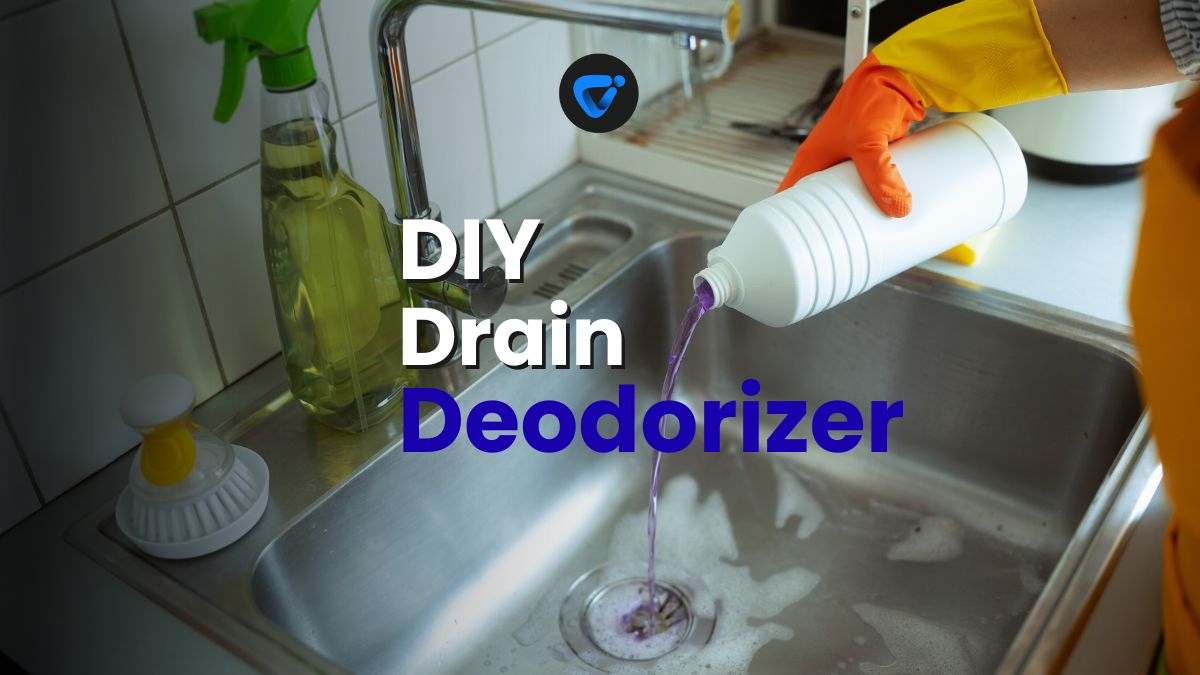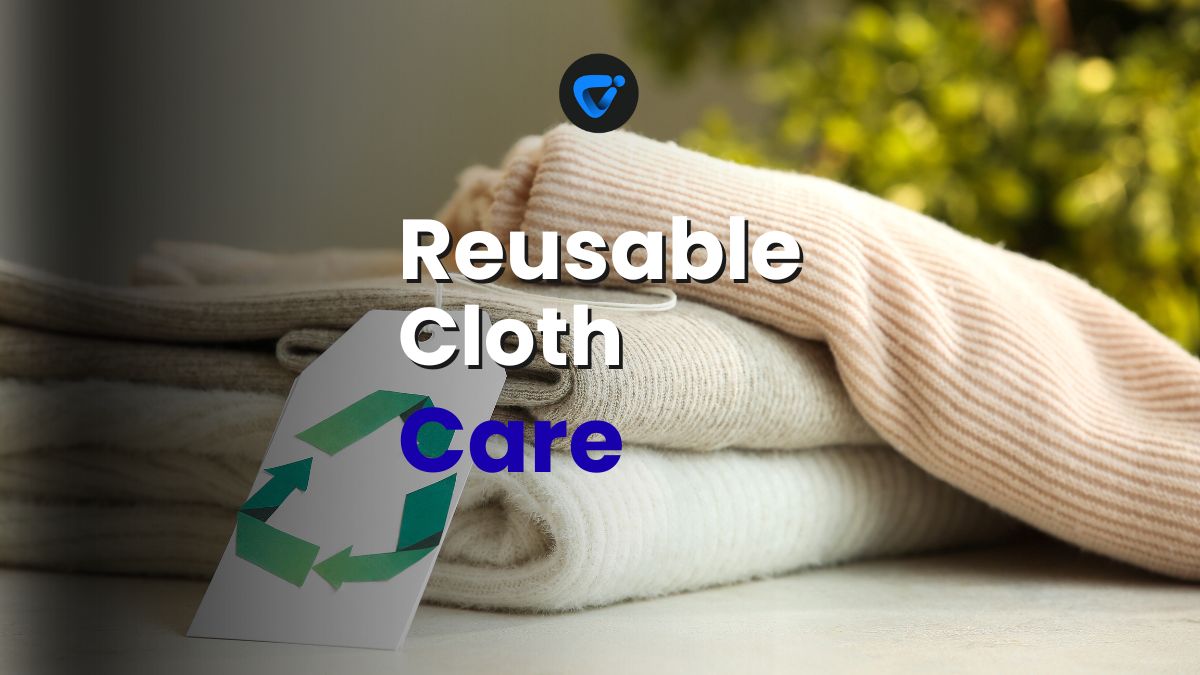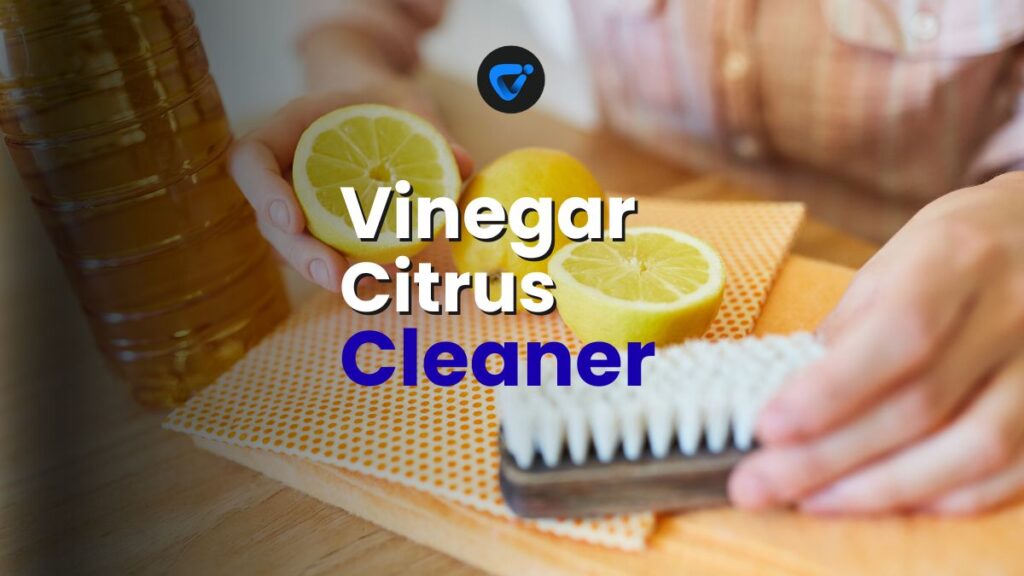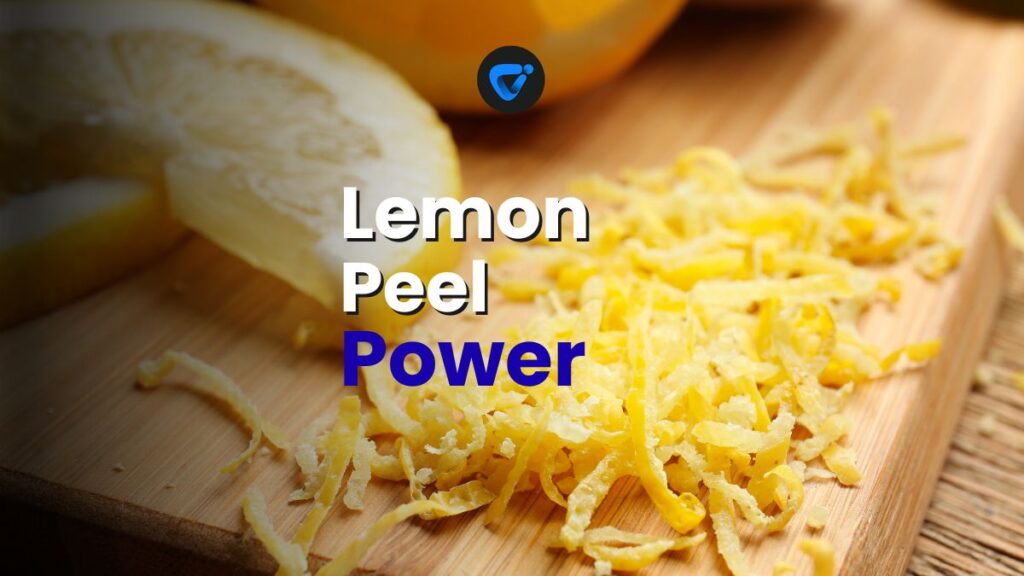
There’s something timeless about returning to basics. Long before modern cleaning aisles overflowed with neon bottles and chemical fragrances, households relied on simple, natural ingredients — vinegar, citrus, and herbs — to keep their homes spotless. These classics never lost their power; they were merely replaced by convenience. Today, they’re making a well-deserved comeback.

DIY Drain Deodorizer with Everyday Pantry Items
Freshen your sink fast! Make a DIY drain deodorizer with simple pantry items for a clean, odor-free kitchen.
A homemade all-purpose cleaner crafted from vinegar and citrus embodies sustainability and self-reliance. It’s affordable, safe, and refreshingly aromatic. Whether you’re reducing waste, avoiding harsh chemicals, or simply drawn to nature’s efficiency, this cleaner becomes a daily ally in both cleanliness and mindfulness.
Why Vinegar and Citrus Work So Well
Vinegar and citrus are two of nature’s most effective and complementary cleaning agents.
- Vinegar (acetic acid) cuts through mineral buildup, soap scum, and grease. It neutralizes odors and dissolves dirt without leaving residue.
- Citrus peels contain d-limonene, a natural solvent that breaks down oils while releasing a bright, energizing scent.
- Combined, they create a solution that cleans, deodorizes, and lightly disinfects, all without synthetic additives.
The result is a cleaner that feels both functional and personal — one that you make, use, and adapt to your own environment.
Gathering Essential Ingredients for Consistent Cleaning Results
Before mixing, organize your ingredients and understand what each contributes. The quality of every element — from vinegar acidity to citrus freshness — directly affects the final cleaner.
| Ingredient | Primary Function | Suggested Alternatives | Next Step |
|---|---|---|---|
| White vinegar | Dissolves buildup, acts as degreaser | Apple cider vinegar | Combine with citrus peels |
| Citrus peels | Adds natural oils, fresh aroma | Lemon, lime, or orange | Scrub and slice before infusing |
| Essential oils | Boosts scent, antimicrobial power | Tea tree, eucalyptus, lavender | Add after straining |
| Herb sprigs | Enhances fragrance, adds antibacterial touch | Rosemary, basil, thyme | Infuse with peels |
| Filtered water | Dilutes for gentle use | Distilled water | Mix after infusion |
Choosing Your Vinegar: White vs. Apple Cider
- White vinegar offers the most power and a neutral color, ideal for tile, glass, and stainless steel.
- Apple cider vinegar works better on wood or delicate surfaces thanks to its softer acidity.
🧴 Stick to 5% acidity for balance: strong enough to clean, gentle enough for safety.
Citrus Choices: Lemons, Oranges, and Limes
Different citrus peels shape the cleaner’s fragrance and strength:
- Lemon: Bright, sharp, and deeply cleansing.
- Orange: Soft, sweet, and cheerful — perfect for living spaces.
- Lime: Tangy and strong, ideal for grease and heavy buildup.
Mixing them creates a nuanced scent profile that evolves with every use.
Infusion Add-Ins: Enhancing Cleaning Power
A homemade cleaner can feel luxurious when infused with complementary scents and properties:
- Essential oils: Add 10–20 drops after straining (tea tree for antimicrobial action, lavender for calm, eucalyptus for freshness).
- Herbs: Fresh rosemary or thyme infuse the vinegar with subtle green notes.
- Spices: Clove, cinnamon, or nutmeg neutralize odors naturally.
These small tweaks personalize each batch and make cleaning feel intentional rather than mechanical.
Building the Cleaner: Step-by-Step Assembly and Infusion
Creating your cleaner is as much ritual as recipe.
Initial Prep
- Wash the citrus thoroughly to remove wax or dirt.
- Peel the fruit, avoiding excess white pith that clouds the liquid.
- Fill a wide-mouth glass jar halfway with peels.
- Pour vinegar until all peels are submerged.
- Seal tightly and shake once a day to release oils.
- Label with date and ingredients for easy tracking.
- Store in a cool, dark place — a pantry shelf works perfectly.
Let it infuse for two weeks. You’ll notice the vinegar turning golden and aromatic.
Finishing and Dilution
After infusion:
- Strain using a fine mesh or cheesecloth.
- Mix 1 part infused vinegar with 1 part filtered water (2:1 for delicate surfaces).
- Add essential oils for extra scent and antimicrobial support.
- Pour into a reusable glass spray bottle.
Your cleaner is now ready — naturally potent and pleasantly scented.
Troubleshooting Common Issues
Even natural mixtures can vary. Here’s how to fix minor issues:
- Sticky residue → Too many peels or oils. Strain again and dilute.
- Cloudy liquid → Use distilled water and filter twice.
- Strong vinegar odor → Add more citrus peels or essential oils; the smell fades once dry.
- Weak cleaning power → Let infusion steep longer (up to 3 weeks).
💡 Every batch improves as you adjust ratios to your preferences.
Daily Use: Application and Best Practices
Your vinegar-citrus cleaner replaces most store-bought products, simplifying your routine.
Ideal Uses
- Kitchen counters and sinks
- Bathrooms and tiles
- Windows and mirrors
- Refrigerator shelves
- Stovetops and cutting boards
- Trash cans and pet areas
How to Apply
- Spray evenly over the surface.
- Let sit for 30 seconds for grime to loosen.
- Wipe with a microfiber cloth for a streak-free finish.
- For grease, sprinkle baking soda first, then spray the cleaner — the fizz enhances scrubbing power.
Avoid Using On
- Marble or granite — acid can etch the stone.
- Unsealed wood — may absorb moisture.
- Screens or electronics — vinegar damages protective coatings.
⚠️ For stone or wood, switch to mild castile soap diluted in warm water.
Compatibility Guide
| Surface | Best Ratio | Notes |
|---|---|---|
| Glass & mirrors | 1:1 | Wipe dry with microfiber |
| Countertops | 1:1 | Avoid marble or granite |
| Tiles & floors | 1:2 | Add drop of dish soap for shine |
| Stainless steel | 1:1 + lemon oil | Buff dry |
| Wood | 1:3 + olive oil | Test first |
This guide helps you adapt ratios based on material type — one formula, endless applications.
Extending Freshness with Smart Storage
Since natural cleaners contain no preservatives, storage matters.
- Use amber glass spray bottles to protect from light.
- Label clearly with contents and mix date.
- Keep sealed and stored at room temperature.
- Shake gently before use to remix essential oils.
- Replace every 3–4 months for best results.
If any film or residue forms, strain and reuse — it’s completely biodegradable.
Beyond Cleaning: Multipurpose Uses Around the Home
Your citrus-vinegar cleaner goes further than countertops. Try these creative uses:
- Fabric refresher: Lightly mist curtains or rugs (test first).
- Deodorizer: Spray garbage bins, shoe racks, or litter boxes.
- Laundry aid: Add ½ cup to the rinse cycle to soften fabrics naturally.
- Garden tools: Clean blades and pots to remove mineral stains.
- Compost bins: Reduce odor and bacteria with a daily spritz.
Each use reduces reliance on specialty cleaners, saving space, money, and packaging waste.
The Environmental Perspective
Switching to homemade cleaners may seem small, but the impact scales quickly.
The Problem with Conventional Cleaners
- Plastic waste: The average household discards 25+ plastic cleaner bottles per year.
- Chemical runoff: Residues enter water systems, harming aquatic life.
- Indoor pollution: Many products emit volatile organic compounds (VOCs), linked to headaches and respiratory irritation.
The Sustainable Alternative
Homemade vinegar cleaners produce zero toxic waste, require minimal energy, and reuse organic materials like citrus peels that might otherwise end up in landfills.
A family using homemade cleaners exclusively can eliminate dozens of plastic containers annually, cutting their carbon footprint while saving hundreds of dollars.
🌍 Every bottle refilled is one less bottle discarded.
The Aromatherapy Connection
Smell influences mood more than most realize. When you clean with natural fragrances, you’re also improving mental well-being.
- Lemon and orange oils uplift and energize.
- Lavender soothes anxiety.
- Eucalyptus clears the airways.
- Rosemary sharpens focus.
Cleaning becomes less a chore and more an act of renewal and mindfulness. Each spray refreshes not only the surface but also the atmosphere of the room — an instant mood reset.
Practical Safety Guidelines
Even gentle cleaners deserve careful use:
- 🧤 Wear gloves for extended cleaning sessions to protect skin.
- 🧴 Keep bottles sealed and labeled away from kids and pets.
- ☠️ Never mix with bleach or ammonia, which produce toxic gases.
- 🧪 Patch-test new surfaces before full application.
- 🚫 Avoid open flames near essential-oil-based cleaners.
Store unused concentrate in a glass jar, not metal — vinegar can corrode metals over time.
A Brief History of Natural Cleaning
Before industrial chemistry dominated the market, vinegar, lemon, and soap were the cornerstones of domestic hygiene.
- Ancient Egypt: Vinegar and ash mixtures cleaned tools and fabrics.
- Rome: Vinegar diluted with water polished bronze and marble.
- 18th-century Europe: Housewives steeped citrus peels in vinegar for washing floors and removing odors — precisely the formula we’re rediscovering today.
Industrialization brought convenience but also synthetic detergents with dyes, perfumes, and stabilizers. The modern return to homemade solutions reflects a broader movement toward health, simplicity, and autonomy in the household.
Extending the Ritual: Cleaning as Mindful Practice
Making your own cleaner turns maintenance into mindfulness. The ritual — peeling fruit, shaking jars, labeling bottles — slows your pace and reconnects you with everyday care.
Cleaning ceases to be a rush for perfection and becomes a sensory experience:
- The citrus aroma grounds you in the present.
- The warm vinegar scent symbolizes renewal.
- The clear surfaces mirror mental clarity.
It’s a reminder that sustainability isn’t only ecological — it’s emotional.
Wrapping Up: Reliable Routines and Cleaner Home Environments
This humble mix of vinegar and citrus represents more than a cleaner; it’s a philosophy of simplicity and stewardship. With a handful of ingredients, you gain:
- Freedom from chemicals you can’t pronounce.
- Control over waste and ingredients.
- A healthier environment for family and pets.
- The quiet pride of self-sufficiency.
Summary Table
| Step | Purpose | Tip |
|---|---|---|
| Gather ingredients | Ensure quality | Use fresh citrus and filtered water |
| Infuse vinegar | Extract oils and scent | Shake daily for 2 weeks |
| Strain and dilute | Adjust potency | Use 1:1 or 1:2 ratio |
| Customize | Personalize fragrance | Add herbs or essential oils |
| Store | Preserve freshness | Label with date |
| Apply | Clean most surfaces | Wipe with microfiber |
| Compost peels | Zero waste | Return to soil |
Conclusion: From Cleaner to Lifestyle
Your homemade all-purpose cleaner does more than sanitize — it transforms how you see your home and your habits. Each jar is a small act of care, connecting your hands to the natural cycle of use and renewal.
By reclaiming a forgotten recipe, you join a modern movement that values health, sustainability, and awareness. The fragrance of citrus and vinegar becomes a daily reminder that real cleanliness isn’t about artificial shine — it’s about harmony, safety, and respect for the world around you.
With every spray, you clean a little more than surfaces — you clear space for conscious living. 🌿✨
Frequently Asked Questions
Use on tiled countertops, appliance exteriors, sinks, and sealed flooring. Avoid marble, granite, and waxed wood, since vinegar’s acidity can dull or etch their finish over time. Always patch test first.
For best extraction of oils and scent, let the mixture sit for at least two weeks. Shake the jar daily to keep flavors mixing. After straining, use the mixture within one month for maximum potency.
Do not mix vinegar with baking soda in the same bottle, as they neutralize each other’s effects. Hydrogen peroxide should be used separately, not combined, to ensure safe and effective cleaning.
Once properly diluted and used only on hard, non-food surfaces, it’s safer than most chemical options. Store bottles out of reach, never spray directly near children or pets, and ventilate rooms after heavy cleaning.
Add a few drops of essential oils to mask vinegar odor, change peels for each batch, and store bottled cleaner in cool, dark spaces. Swap out the remaining cleaner monthly as aromas start to fade.

Reusable Cleaning Cloths
Clean greener and smarter! Discover the best eco fabrics, care tips, and simple wins for reusable cleaning cloths.


